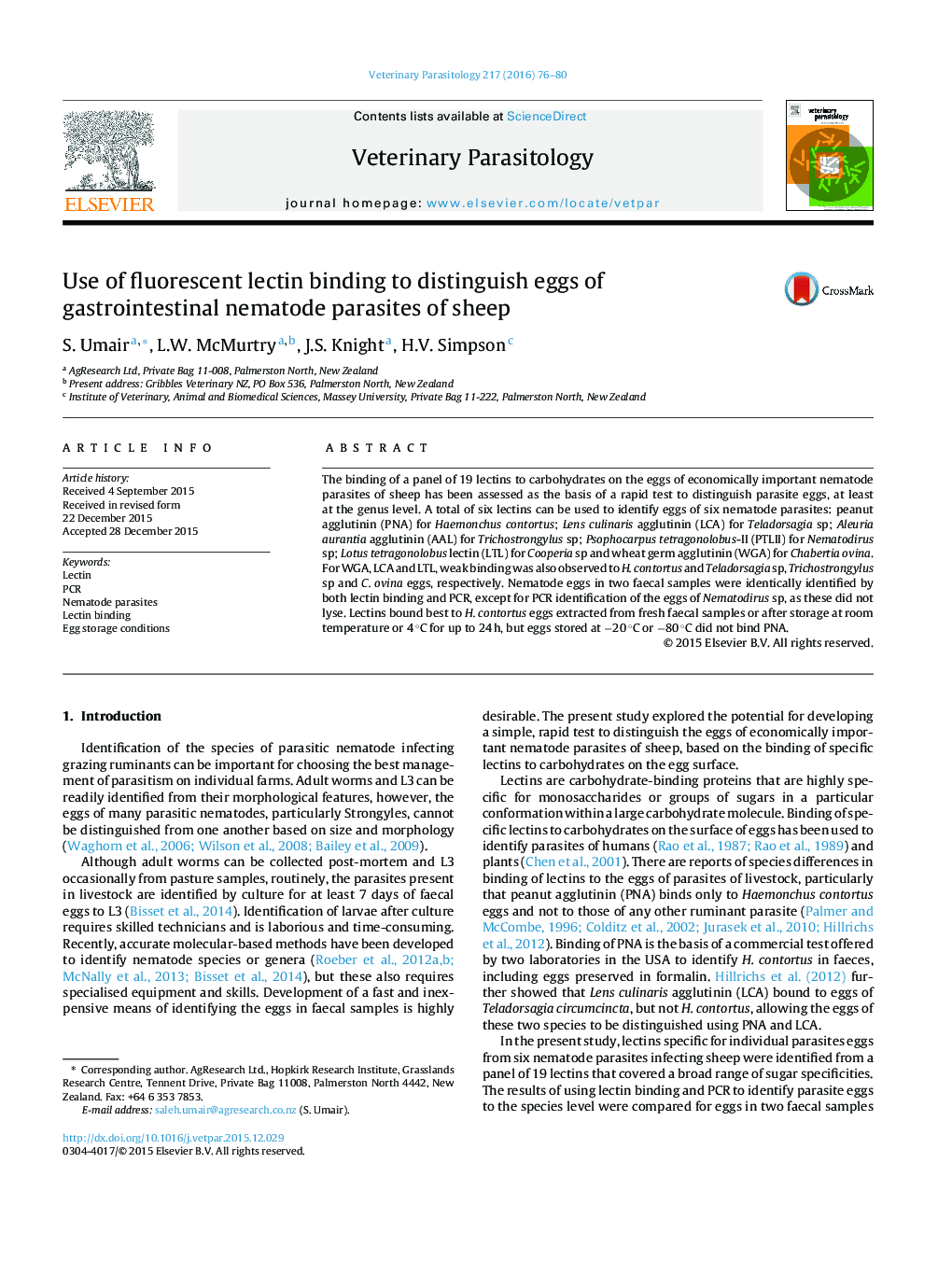| Article ID | Journal | Published Year | Pages | File Type |
|---|---|---|---|---|
| 2469936 | Veterinary Parasitology | 2016 | 5 Pages |
•Lectins binding to carbohydrates on the nematode parasites eggs has been assessed.•A total of six lectins can be used to identify eggs of six nematode parasites.•Lectins bound best to Haemonchus contortus eggs extracted from fresh faecal samples.
The binding of a panel of 19 lectins to carbohydrates on the eggs of economically important nematode parasites of sheep has been assessed as the basis of a rapid test to distinguish parasite eggs, at least at the genus level. A total of six lectins can be used to identify eggs of six nematode parasites: peanut agglutinin (PNA) for Haemonchus contortus; Lens culinaris agglutinin (LCA) for Teladorsagia sp; Aleuria aurantia agglutinin (AAL) for Trichostrongylus sp; Psophocarpus tetragonolobus‑II (PTLII) for Nematodirus sp; Lotus tetragonolobus lectin (LTL) for Cooperia sp and wheat germ agglutinin (WGA) for Chabertia ovina. For WGA, LCA and LTL, weak binding was also observed to H. contortus and Teladorsagia sp, Trichostrongylus sp and C. ovina eggs, respectively. Nematode eggs in two faecal samples were identically identified by both lectin binding and PCR, except for PCR identification of the eggs of Nematodirus sp, as these did not lyse. Lectins bound best to H. contortus eggs extracted from fresh faecal samples or after storage at room temperature or 4 °C for up to 24 h, but eggs stored at −20 °C or −80 °C did not bind PNA.
